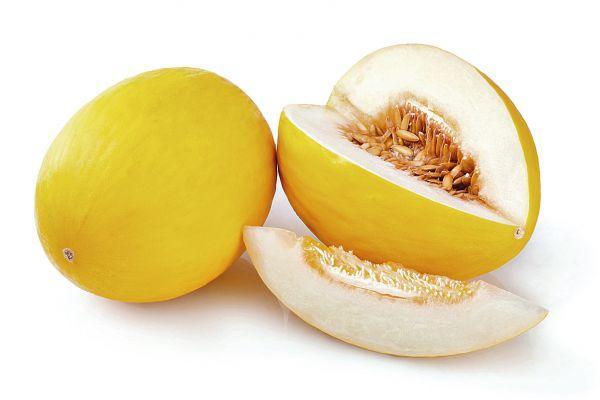
Melon belongs to the Cucurbitaceae family, the same as pumpkin, watermelon and cucumbers. There are several varieties of melon (Cucumis melo), some with yellow / orange pulp, others with white / pale yellow pulp.
There are summer variants and winter variants. In reality, even the winter melon is harvested in summer, but it can be kept until December, so much so that we often find it among the ingredients of the Christmas table.
What are the most popular types of melon?
> Cantaloupe melon (Cucumis melo, var.cantalupensis): summer melon from yellow-orange pulp.
> Netted melon (Cucumis melo, var.reticulatus): this is also a summer melon. There are several variants of the netted melon and la pulp varies from light yellow to orange.
> Winter melon (Cucumis melo var. Inodorus): they are the so-called white pulp melons.
How to store melon
The ideal ways to store melon depend on the degree of ripeness at the time of purchase:
> I summer melons they can be stored out of the refrigerator only if they are not very ripe at the time of purchase, otherwise they must be kept in the refrigerator, at a maximum temperature of 5 degrees, and eaten within a few days.
> He winter melon, instead, you can buy it in September and keep it even until December, the important thing is to follow a few simple rules: choose late melons that, at the time of purchase, have not yet fully ripened and store them in a cool, dry and ventilated.
The winter melon should be kept hanging, or placed in a perforated wooden box, on a layer of straw. There are those who also keep it in the refrigerator; it could be an alternative, but it must be placed in the fruit drawer without letting it come into contact with the relative walls, to prevent it from deteriorating in the support point.
Read also The ancient and forgotten melons >>
Why include yellow melon and white melon in your diet
Let's see the many reasons why it is important to include white and yellow melon in the diet:
> The melon it is low in calories; it is very rich in water and is therefore thirst-quenching, moisturizing and diuretic.
> In the face of a limited caloric intake, has a high satiety index, thanks also to the richness of fibers.
> It is quite nutritious: it is rich in sugars (sucrose, fructose and glucose), mineral salts (mainly potassium, phosphorus, sodium and calcium) and vitamins (especially vitamin A, vitamin C and vitamins of group B).
> Stimulates the intestinal motility and helps protect the gut epithelium.
Ideas for including white melon and yellow melon in your diet
Let's try our melons, like this:
> With ham, even vegetable: ham and melon is one of the fast and most typical dishes of our culinary tradition; excellent especially in summer, also because the ham goes well with the yellow pulp melon.
In addition to the classic dish of ham and melon you can take advantage of this combination in a more original way, for example: skewers composed of diced melon alternated with diced ham, or cold pasta with ham and melon, always diced.
> In mixed fruit salads but also in salads. Its flavorIn fact, lends itself well to many savory combinations, for example, melon, shrimp and celery salad; salad with melon, figs and diced bresaola; melon, feta and cucumbers; melon, rocket and primosale.
White melon goes well with mortadella, therefore, for example, you can make a salad with white melon, diced mortadella and pistachios.
> In shakes e smoothie.
> To prepare natural popsicles, ice creams and sorbets.
> To create unpublished and original savory recipes; for example they can be prepared fish rolls (carpaccio of swordfish or octopus, or even smoked salmon) with the melon cut into strips inside, or make arice salad with melon, shrimp and cucumbers; fish and all crustaceans go well with melon.
Read also 5 fruits rich in potassium >>


























